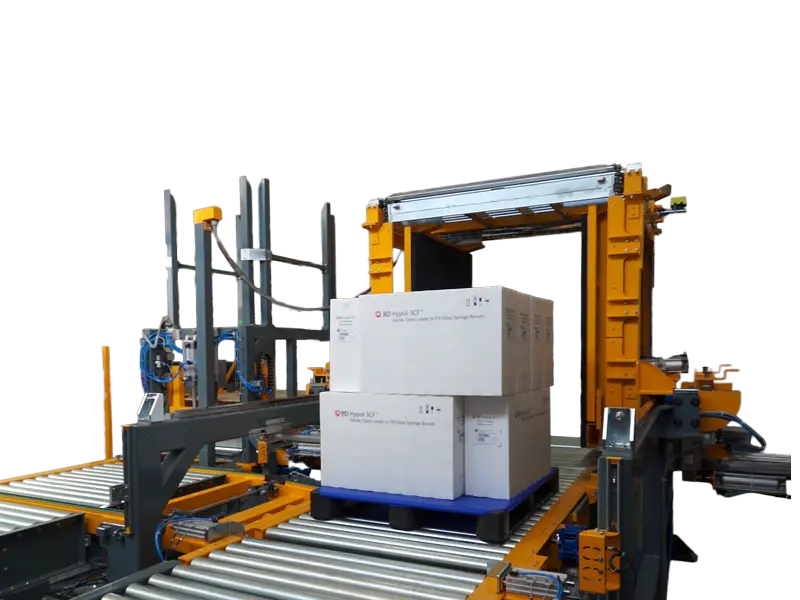From Manual to Smart: Pallet Inverters Transforming Colombia's Material Handling
Are your manual handling processes holding your business back? In warehouses and factories across Colombia, teams still lift heavy boxes one by one to swap pallets. This work is slow, it's dangerous for employees, and it often leads to damaged products. This outdated method creates a major bottleneck, limiting your throughput and hurting your bottom line. It feels like trying to win a race while running in mud. But there is a clear solution. Smart pallet inverters automate this entire task, making your logistics faster, safer, and much more efficient. They are a critical step in moving from slow manual labor to smart, automated material handling.
Pallet inverters are transforming Colombia's material handling by replacing slow and unsafe manual labor with fast, automated systems. These machines securely clamp and rotate entire pallet loads to allow for quick exchanges. This leap in technology boosts operational efficiency, drastically reduces product damage, and improves worker safety. As a result, Colombian factories and distribution centers are becoming more productive and competitive on a global scale.
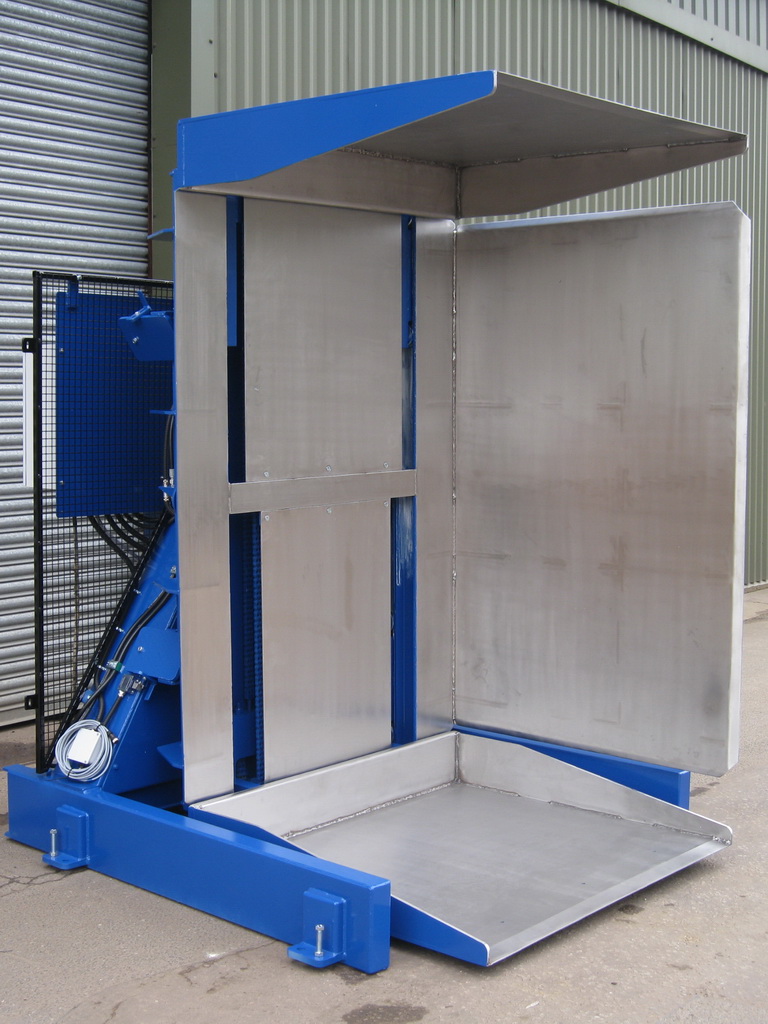
I’ve spent my entire career in the packing and handling industry. I've seen firsthand how a single, smart investment can change everything for a company. The shift from manual to automated pallet handling is one of those game-changers. But I understand you have questions. How does it work? Is the investment worth it? How does it fit into a larger strategy? Let's walk through these questions together, based on what I've learned helping businesses grow.
How do pallet inverters solve the problem of aging manual processes?
Your team is still handling pallets the old-fashioned way. It's a process filled with risks. Your workers are straining their backs, the work is slow, and every so often, a valuable product gets dropped and damaged. These aging manual processes are a weak link in your modern production line, a problem I've seen in many factories. Every manual lift is a potential safety incident and a source of inefficiency. In a competitive market, these small, daily problems add up to a significant disadvantage. A pallet inverter directly targets this weak link. It mechanizes the entire task of swapping pallets, removing the physical strain from your people and eliminating the most common cause of handling damage.
Pallet inverters solve aging manual processes by fully automating the transfer of goods between pallets. Instead of requiring workers to lift heavy items by hand, the machine clamps the entire load, rotates it up to 180 degrees, and allows for the seamless replacement of a damaged, contaminated, or incorrect pallet. This single action eliminates dangerous manual lifting, accelerates the entire workflow, and protects your products from damage.

Dive Deeper: The True Cost of 'Business as Usual'
When I visit factories that still rely on manual pallet swapping, the managers often don't see the full picture. They see labor as a fixed cost. But the hidden costs are what truly hurt the business. Let's break down why this aging process is so expensive and how an inverter provides a direct solution.
The Hidden Costs of Manual Pallet Swapping
Manual handling is more than just slow. It drains resources in several ways:
- Direct Labor Costs: You are paying multiple employees to do a repetitive, low-value task. Their time could be used for more critical activities like quality control or machine operation.
- Workplace Injury Costs: Back injuries are one of the most common and expensive workplace incidents. A single claim can cost thousands of dollars in medical bills and lost workdays, not to mention the impact on employee morale.
- Product Damage Costs: Human error is inevitable. Boxes get dropped, bags tear, and containers get dented. When dealing with high-value goods, a 1-2% damage rate from manual handling can represent a massive financial loss over a year.
- Throughput Inefficiency: A manual team might take 10-15 minutes to transfer a single pallet load. An inverter does it in about 60 seconds. This speed difference directly impacts how quickly you can move products from production to shipping.
How a Pallet Inverter Directly Addresses These Issues
A pallet inverter is not just a piece of equipment; it's a solution to a systemic problem. It confronts each of the hidden costs head-on.
| Metric | Manual Pallet Swapping | Using a Pallet Inverter |
|---|---|---|
| Time per Pallet | 10-15 minutes | ~60 seconds |
| Labor Required | 2-3 workers | 1 operator |
| Risk of Injury | High (lifting, twisting) | Near-zero (automated process) |
| Product Damage Rate | 1-3% (human error) | <0.5% (secure clamping) |
| Process Consistency | Variable | Highly consistent and predictable |
I remember a client in Bogotá whose facility was struggling with these exact issues. They produced food products and had to switch from wooden pallets to plastic ones for hygiene. Their manual process was causing contamination risks and product damage. After we installed a pallet inverter, they not only solved their hygiene problem but also redeployed three workers to more valuable roles and cut their product damage losses by 90%. It was a fundamental change to their operation.
What are the direct ROI and cost savings with smart pallet inverters?
As a business owner, you live and die by the numbers. Every investment, especially in new machinery, must be justified with a clear return. With energy prices fluctuating and pressure to lower operating costs, you can't afford to spend money on something that doesn't deliver tangible results. I understand this pressure completely. When I started my own factory, every dollar counted. The cost of not upgrading can be higher than the investment itself, as you lose ground to more efficient competitors. Smart pallet inverters are not a cost center; they are an investment that delivers a measurable Return on Investment (ROI) by directly attacking major operational expenses.
The direct ROI from a pallet inverter is calculated from clear and significant cost savings. The largest savings come from reduced labor costs, as manual handlers can be reassigned. Further savings come from eliminating product damage and lowering expenses related to workplace injuries. The increased throughput also means more product can be shipped per hour, boosting revenue potential. Together, these savings often result in a full payback period of 12 to 24 months.
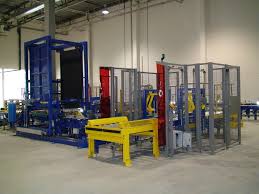
Dive Deeper: A Practical Guide to Calculating Your Return
Let's move beyond general statements and look at how you can calculate the potential ROI for your own operation in Colombia. This is the same kind of feasibility analysis you'd perform for any major capital expenditure. It's about making a decision based on data, not just a sales pitch.
Step 1: Calculate Your Labor Savings
This is the most straightforward calculation.
- Formula: (Number of Workers) x (Hours per Day on Pallet Swapping) x (Hourly Wage) x (Working Days per Year)
- Example: Let's say you have 2 workers who spend 4 hours a day each on this task, at an hourly wage of COP 10,000 (including benefits).
- 2 workers x 4 hours/day = 8 hours/day
- 8 hours x COP 10,000/hour = COP 80,000 per day
- COP 80,000 x 250 days/year = COP 20,000,000 in annual labor savings.
An inverter reduces this to a single operator spending a fraction of that time.
Step 2: Quantify Reduced Product Damage
This requires an honest look at your current losses.
- Formula: (Annual Value of Handled Goods) x (Current Damage Rate %)
- Example: Your facility handles COP 5,000,000,000 worth of goods annually, with a 1.5% damage rate from manual handling.
- COP 5,000,000,000 x 1.5% = COP 75,000,000 in annual losses.
A pallet inverter can reduce this rate to below 0.25%, saving you over COP 60,000,000.
- COP 5,000,000,000 x 1.5% = COP 75,000,000 in annual losses.
Step 3: Put It All Together
Now, let's create a simple ROI table. Assume a pallet inverter costs COP 150,000,000.
| Cost Savings Area | Annual Savings (COP) |
|---|---|
| Labor Savings | 20,000,000 |
| Reduced Product Damage | 60,000,000 |
| Avoided Injury Costs (Estimated) | 10,000,000 |
| Total Annual Savings | 90,000,000 |
ROI Calculation:
- (Total Annual Savings / Initial Investment Cost) x 100
- (90,000,000 / 150,000,000) x 100 = 60% ROI
- Payback Period: 150,000,000 / 90,000,000 = 1.67 years
This kind of analysis shows that a pallet inverter isn't an expense. It's an investment that actively helps you achieve your goal of reducing overall operating costs and improving your profit margin.
How can pallet inverters integrate into a digital factory strategy?
You have an ambitious goal: a fully digital factory with MES, IoT sensors, and data analytics. A standalone machine that can't communicate feels like a step backward. It's an island of dumb iron in a sea of smart technology. If new equipment can't connect to your central systems, it becomes a data black hole. This blindness prevents you from achieving full production visibility and makes it impossible to include in smart scheduling or predictive maintenance programs. The good news is that modern pallet inverters are not the simple machines of the past. They are designed for integration. They are smart, connected devices that fit perfectly into a digital ecosystem.
Pallet inverters integrate into a digital factory by connecting directly to Manufacturing Execution Systems (MES) or Warehouse Management Systems (WMS). Equipped with PLCs and sensors, they transmit real-time data on cycle counts, operational status, errors, and energy consumption. This data flow enables centralized monitoring, unlocks predictive maintenance capabilities, and allows the inverter to function as a seamless node in a fully automated production line.
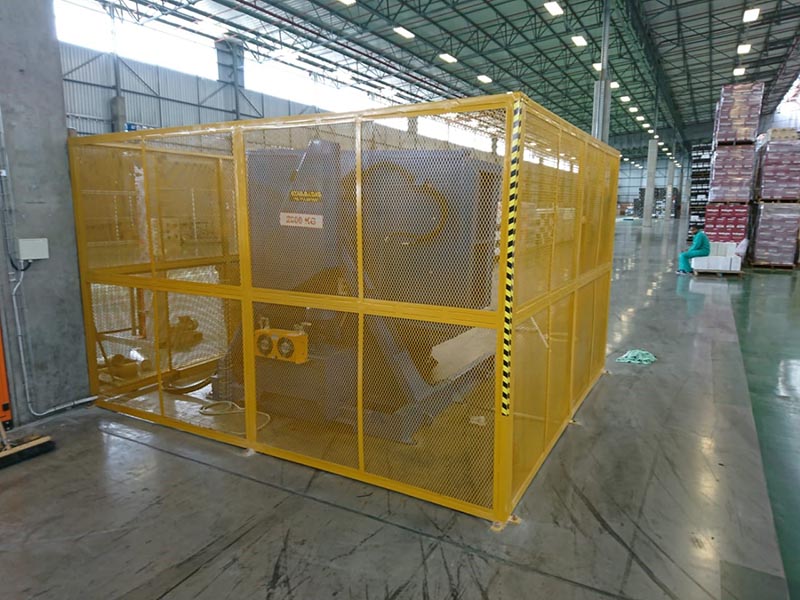
Dive Deeper: From a Mechanical Tool to a Data Source
The concept of a "smart factory" or "Industry 4.0" is about data. It's about making decisions based on real-time information from the factory floor. A modern pallet inverter is a valuable source of that data. As an engineer, this is the part that truly excites me. It's where mechanical design meets information technology.
Connecting to Your MES and WMS
A pallet inverter's Programmable Logic Controller (PLC) is its brain. This PLC can be programmed to communicate with your higher-level systems using standard industrial protocols like OPC UA or Modbus TCP/IP.
- What data can it send?
- Cycle Count: How many pallets have been processed. This is crucial for tracking throughput.
- Machine Status: Running, idle, faulted.
- Fault Codes: Specific error messages (e.g., 'Hydraulic pressure low,' 'Safety gate open'). This tells maintenance exactly where to look.
- Cycle Time: The average time taken per pallet. A sudden increase can indicate a mechanical problem.
This information feeds directly into your Overall Equipment Effectiveness (OEE) calculations, giving you a true picture of your facility's performance.
Leveraging IoT for Predictive Maintenance
This is key to achieving your goal of 95% equipment uptime. Instead of waiting for a breakdown, you can predict it.
- How it works: We can equip the inverter with additional IoT sensors. A vibration sensor on the main motor can detect bearing wear weeks before it fails. A pressure sensor in the hydraulic system can spot a slow leak before it becomes a major problem. An energy monitor can track power consumption, and a spike might indicate motor strain.
- The benefit: This data is streamed to your analytics platform. Your maintenance team gets an alert: "Vibration on Inverter #3 has increased by 15%. Schedule inspection." This transforms your maintenance from reactive (fixing broken things) to proactive (preventing things from breaking).
Building a Fully Automated Line
Imagine this workflow: An Automated Guided Vehicle (AGV) brings a pallet from your production line. It drops it at the pallet inverter. The inverter automatically swaps the production pallet for a standardized shipping pallet. A sensor confirms the new pallet is in place, and a signal is sent to your WMS. The system then calls another AGV to take the ready-to-ship pallet to the loading dock. In this scenario, the pallet inverter is not just a machine; it's a fully integrated, intelligent link in your logistics chain. This is the future of material handling in Colombia and beyond.
What should a CEO in Colombia look for during the selection and installation process?
Choosing the right machine is a challenge. The market is full of options, and making the wrong decision leads to a piece of equipment that doesn't fit your workflow, is unreliable, or is a nightmare to service. As a CEO, a bad investment costs more than just money; it costs production time, creates frustration for your team, and damages your credibility. For a business in Colombia, you also have the added challenge of ensuring you have local support, service, and spare parts. This is why a structured selection process is critical. You are not just buying a machine; you are choosing a long-term strategic partner.
When selecting a pallet inverter in Colombia, a CEO should evaluate four critical areas. First, confirm the technical specifications, ensuring the load capacity, dimensions, and cycle time meet your specific product needs. Second, demand top-tier safety features and international compliance (like CE certification). Third, rigorously assess the supplier's ability to provide local installation, operator training, and reliable after-sales support in Colombia. Finally, ensure the machine's control system can be easily integrated with your existing factory software.
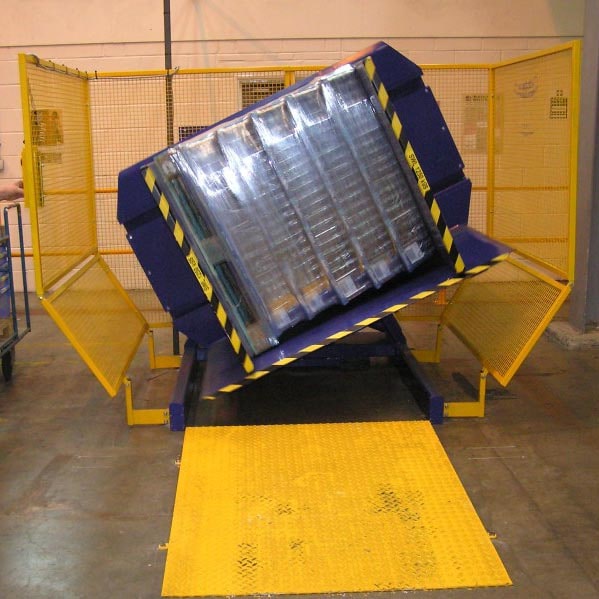
Dive Deeper: Your Practical Checklist for Making the Right Choice
From my experience helping clients through this process, I have developed a checklist. It goes beyond the price tag and focuses on what truly matters for long-term success. Use this as a guide when you talk to potential suppliers.
Technical Specifications Checklist
This is about matching the machine to your product and facility.
- Load Capacity: What is the maximum weight of your heaviest pallet? Choose a machine with at least 25% extra capacity for a safety margin.
- Load Dimensions: What are the length, width, and height of your largest pallet load? Ensure the machine's opening is large enough.
- Product Type: Are you handling boxes, bags, pails, or fragile items? The clamping mechanism must be suitable. Adjustable clamping pressure is a must-have feature for delicate goods.
- Footprint & Power: Does the machine physically fit in your available space? Is your factory's power supply (voltage, phase) compatible with the machine's requirements? This is a simple but often overlooked detail.
Safety and Compliance Checklist
Safety is non-negotiable.
- Physical Guarding: Does the machine come with full safety fencing to prevent anyone from entering the operational area while it's moving?
- Light Curtains: Are there light curtains at the entry/exit points that will immediately stop the machine if a person or object crosses the beam?
- Emergency Stops: Are E-stops easily accessible from all sides of the machine?
- Certifications: Does the supplier provide documentation for CE or ISO certification? This is a guarantee that the machine is built to high international safety and quality standards.
Supplier Evaluation Checklist
This is where you separate the box-sellers from the true partners.
- Local Presence: Do they have experience working in Colombia or Latin America? Do they have a local agent or technician?
- Installation & Training: Is on-site installation and comprehensive operator training included in the price? Who provides it?
- After-Sales Support: What is their guaranteed response time for a service request? Where are spare parts shipped from, and what is the typical delivery time? Ask for references from other customers in your region.
This is the core of our philosophy at SHJLPACK. We built our company on the idea that our job doesn't end when the machine is delivered. Our mission is to be a knowledge-sharing partner, helping you succeed long after the installation is complete.
Why is user training and maintenance crucial for long-term success?
The installation is complete, and the new pallet inverter is in place. It's easy to think the job is done. But soon, you might hear reports that it's not running as fast as promised, or that operators are overriding safety features. The investment that looked so good on paper is not delivering its full value. Without proper training, your team may use the machine inefficiently or unsafely. And without a proactive maintenance plan, small, fixable issues will inevitably grow into major breakdowns. This directly threatens your goal of 95% uptime and slowly erodes the ROI you worked so hard to calculate.
Comprehensive user training and a proactive maintenance schedule are essential to protect your investment. Training ensures operators can use the pallet inverter safely and at peak efficiency, maximizing throughput. A regular maintenance plan is vital for preventing unexpected downtime, identifying potential failures before they happen, and ensuring the machine delivers reliable performance for its entire service life.
Dive Deeper: Protecting Your Asset for the Long Haul
A machine is only as good as the people who operate it and the care it receives. I have seen perfectly good equipment fail prematurely due to neglect in these two areas. Securing the long-term value of your pallet inverter requires a commitment to both your people and a structured maintenance program.
Building an Effective Training Program
Good training is more than just a 30-minute demonstration. It's about creating confidence and competence.
- Classroom Knowledge: The supplier's technician should start with a session covering the "why." Explain the machine's purpose, its controls, and most importantly, all the safety features. Explain what each sensor and E-stop does.
- Hands-On Practice: Under supervision, have every operator run the machine. Let them load a pallet, run a full cycle, and unload it. Have them practice responding to a simulated fault. Repetition builds muscle memory.
- Create Simple SOPs: Develop a one-page Standard Operating Procedure with pictures and simple instructions in Spanish. Post it directly on the machine. This document should be a quick reference for daily operation.
- "Train the Trainer": Designate one or two of your senior operators as "super users." Give them advanced training so they can onboard new employees in the future.
Developing a Preventive Maintenance Schedule
This is the secret to achieving 95%+ uptime. It's a simple schedule of checks and tasks that prevent surprise failures. A good supplier will provide this, but you must ensure it is followed.
| Frequency | Task | Responsible |
|---|---|---|
| Daily | - Visual inspection for leaks (hydraulic fluid, oil) - Clean sensors and light curtains - Check that safety guards are in place |
Operator |
| Weekly | - Check hydraulic fluid level - Test all E-stop buttons - Listen for unusual noises from motors or bearings |
Shift Supervisor |
| Monthly | - Lubricate all specified grease points - Check for loose bolts or electrical connections - Inspect chains and belts for proper tension |
In-House Maintenance |
| Annually | - Full inspection by a certified technician - Hydraulic fluid and filter change - In-depth testing of all safety circuits |
Supplier/Certified Technician |
By investing a few hours each month in training and maintenance, you transform a one-time purchase into a reliable, long-term asset that will continue to deliver cost savings and efficiency for more than a decade.
Conclusion
Pallet inverters are a powerful step towards smart material handling. They boost safety, cut costs, and integrate into modern factories, driving real growth for businesses in Colombia and beyond.
